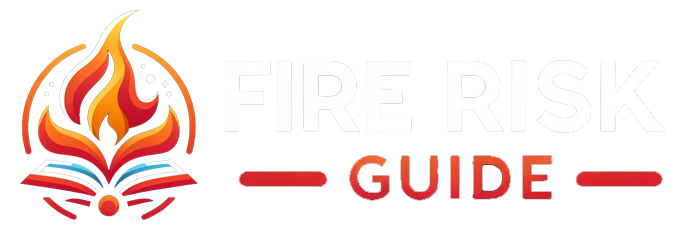A comprehensive fire risk assessment template according to UK regulations typically includes the following key elements:
- Identification of Fire Hazards: This involves identifying anything that could potentially cause a fire.
- Identification of People at Risk: Determining who may be at risk in the event of a fire, considering employees, visitors, and any other persons who might be present.
- Evaluation, Removal, or Reduction of Risks: Assessing the identified risks and implementing measures to eliminate or reduce these risks.
- Record of Findings and Preparation of an Emergency Plan: Keeping a written record of the fire risk assessment and preparing an emergency plan that includes fire detection and warning systems, fire-fighting equipment, and emergency routes and exits.
- Review and Regular Update of the Fire Risk Assessment: Ensuring that the fire risk assessment is regularly reviewed and updated, especially when there are significant changes in the workplace.
Additionally, it’s important to consider:
- The needs of vulnerable people (e.g., the elderly, young children, or those with disabilities)
- Information dissemination to employees and others on the premises
- Staff fire safety training
For businesses with 5 or more people, keeping a written record of the fire risk assessment is mandatory.
Detailed guidance and templates for fire risk assessments can be found on various UK government and fire service websites. For instance, the Shropshire Fire & Rescue Service provides a generic fire risk assessment template under The Regulatory Reform (Fire Safety) Order 2005. Similarly, the Avon Fire & Rescue Service offers a fire risk assessment template that covers measures to reduce fire risks, means of escape, means for fighting fires, and arrangements for action in the event of a fire.
These templates and guides are designed to help the ‘responsible person’ (usually the employer or the person in control of the premises) to conduct a thorough and compliant fire risk assessment. It’s also recommended to get professional advice or assistance, especially if the responsible person does not have the expertise or time to conduct the assessment themselves.
Fire Risk Assessment Template
1. Basic Information
- Date of Assessment:
- Assessor’s Name:
- Premises Address:
- Type of Premises (e.g., office, shop, factory):
- Number of Floors:
- Number of Occupants:
2. Identification of Fire Hazards
- Sources of Ignition (e.g., electrical equipment, smoking materials, naked flames):
- Sources of Fuel (e.g., paper, plastic, chemicals):
- Sources of Oxygen (e.g., air conditioning, natural ventilation):
3. Identification of People at Risk
- Employees:
- Visitors:
- Vulnerable Individuals (e.g., elderly, children, disabled persons):
4. Evaluation of Risk
- Probability of Fire (High/Medium/Low):
- Potential Consequences (High/Medium/Low):
- Existing Control Measures (e.g., fire extinguishers, fire alarms):
5. Control Measures
- Removal or Reduction of Hazards:
- Fire Detection and Warning Systems:
- Emergency Exit Routes:
- Fire Fighting Equipment:
- Training and Information for Staff:
- Special Measures for Vulnerable Individuals:
6. Record of Findings and Emergency Plan
- Summary of Findings:
- Action Plan: (Who, What, When)
- Emergency Evacuation Plan:
7. Review and Update
- Date of Next Review:
- Comments on Changes Required:
8. Sign Off
- Assessor’s Signature:
- Date:
